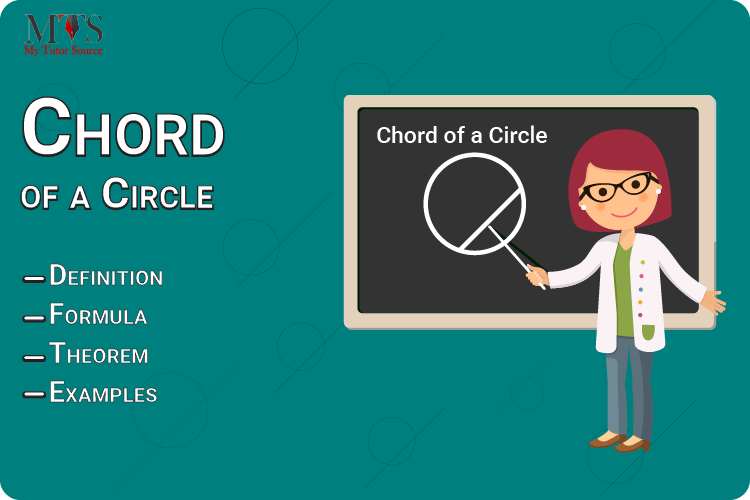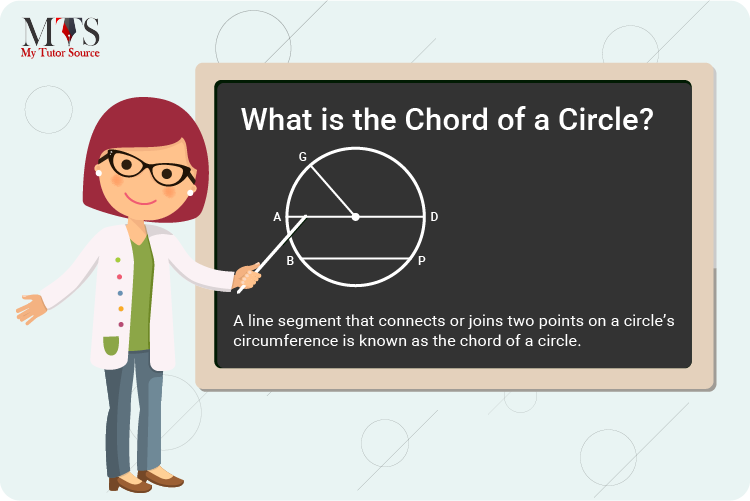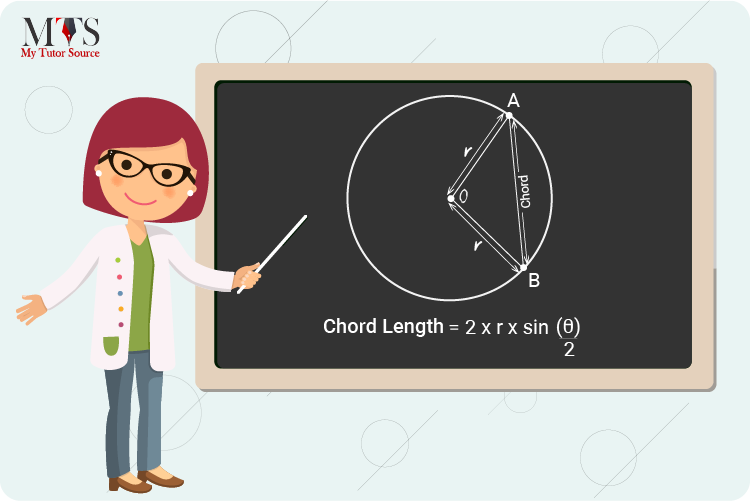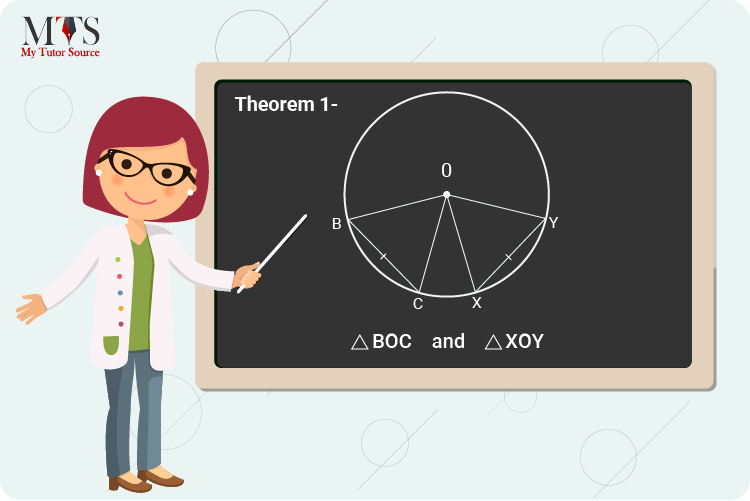

Learn everything about the chord of a circle along with its terms like chord length formula, chord length, examples using chord length formula, and a lot more. We have designed this blog format for you in an easy-to-understand step-by-step method considering your queries and complexities. Reading this would make you feel like you are reading notes customized by your private math tutor. So, let’s start learning!
A line segment that connects or joins two points on a circle’s circumference is known as the chord of a circle. By definition, the diameter will be the longest chord of the circle as it passes through the mid or center of the circle, cutting it into two equal halves. Chord’s endpoints will always lie on the circumference of a circle.
Note: circumference is the distance surrounding the circle.
Following is the figure of a circle with the longest chord (diameter) to help you understand the chord of the circle more clearly.

Here, AD represents the circle’s diameter (the longest chord) with ‘O’ as the center. Also, ‘OG’ represents the radius of the circle and ‘BP’ represents a chord of the circle.
Before delving into the details, formulas, and questions regarding the chord of the circle, here are the main key parts of a circle. You just need to know:
Following are a few important properties of the chord of a circle, you should know:
Calculating the length of the chord of any circle is important to solve some questions and theorems related to circles. How to find the chord length of a circle differs as there are two basic formulas for it.


Here,
r = the radius of a circle
θ = the angle subtended at the center by the chord
d = the perpendicular distance from the chord to the center of a circle
Question 1: Calculate the radius of the circle if 2 is the perpendicular distance between the chord and the center and 5 is the length of the chord. Use the chord of length formula.
Solution:
Given that,
Length of the chord= Clen = 5
The perpendicular distance between the chord and the center= d = 2
Radius of the circle = r =?
We will find the radius using;
⇒ Clen = 2 * √ (r2 − d2)
(Put given values)
⇒ 5 = 2 * √ (r2 − 22)
⇒ 2.5 = √ (r2 − 4)
Now, sqrt on both sides
⇒ 6.25 = r2 − 4
⇒ 6.25 + 4 = r2
⇒ 10.25 = r2
⇒ √ (10.25) = r
⇒ 3.2 = r
Hence, the radius of the circle is about 3.2
Question 2: Jack is eating dinner with his family at a restaurant nearby. He ordered spaghetti for himself, and it was served on a plate of radius 7 inches. What would be the angle swept out the chord if the spaghetti strand is 5 inches long? Apply chord length formula.
Solution:
Formula
Clen = 2 * r * sin (θ/2)
where,
Clen = length of chord = 5
r = radius = 7
(Put values in the formula)
⇒ 5 = 2 x 7 x sin (θ/2)
⇒ 5 = 14 x sin (θ/2)
⇒ 5 / 14 = sin (θ/2)
⇒ sin−1 (5/14) = θ/2
⇒ 0.365 = θ/2
⇒ θ = 0.73
Hence, the angle of spaghetti is 0.73 radians.

Proof: ∆BOC and ∆XOY
Given that,
⇒ BC = XY
chords of equal length
⇒ OB = OC = OX = OY
radius of the same circle
⇒ ∆BOC ≅ ∆XOY
side-side-side axiom of the congruence
⇒ ∠ BOC = ∠ XOY
the congruent parts of congruent triangles, CPCT
Hence, proved.

Proof: ∆BOC and ∆XOY
⇒ ∠ BOC = ∠ XOY
given that, equal angles subtend at center O of the circle
⇒ OB = OC = OX = OY
radius of the same circle
⇒ ∆BOC ≅ ∆XOY
SSS or side-side-side axiom of the congruence
⇒ BC = XY
The congruent parts of congruent triangles, CPCT
Hence, proved.

Proof:
Given that, chords AC and BD are equal in length
Now, join A and B with center O and drop perpendiculars from O to the chords AC and BD
⇒ AM = AC/2 and BN = BD/2
These are the perpendicular from the center, bisect the chord
In △OAM and △OBN
⇒ ∠1 = ∠2 = 90°
OM ⊥ AC and ON ⊥ BD
⇒ OA = OB
Radius of the same circle
⇒ OM = ON
Given that
⇒ △OPB ≅ △OND
The RHS Axiom of Congruency
⇒ AM = BN
Two corresponding parts of congruent triangle
⇒ AC = BD
Hence, proved.
Note: We have mentioned the statements and reasons respectively in the theorems.